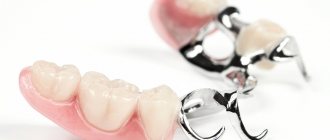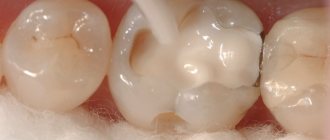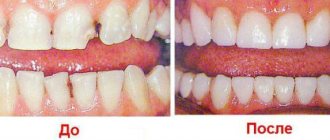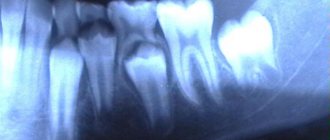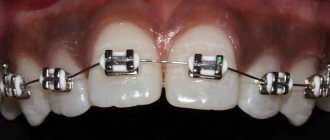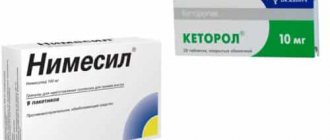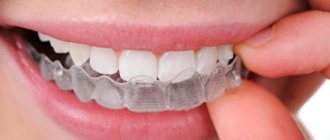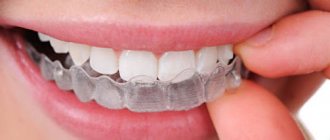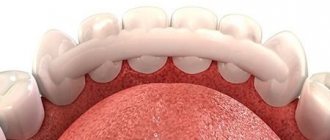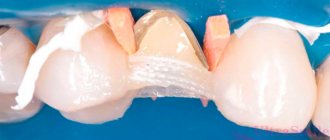Classification by curing mechanism
- chemically cured composites;
- hot curing (the polymerization reaction is initiated under the influence of high temperatures);
- cold curing (the reaction is initiated by a redox mechanism at room temperature);
- light curing.
Light-curing composites vary in paste consistency. They are divided into dense, or packable, as well as varieties of fluid or universal (medium) consistency.
Staging methods
There are two main methods of canal obturation using the products in question - cold and hot. The first involves lateral condensation of each inserted rod, which is at room temperature.
The method is recommended for channels that have a regular round shape, which ensures a good fit to the walls of the passage.
The required standard size of the rod is determined by the master file - the last tool with which the stock was prepared. The work is performed in the following sequence:
- A sealant (sealer) is applied to the walls of the prepared canal.
- The selected model is inserted into the stock (after installing it, it is recommended to make several reciprocating movements to remove air).
- The part protruding above the mouth is cut off.
- Vertical condensation is carried out using heated pluggers of several sizes, first large, then smaller.
- After the canal is completely filled, a temporary dressing is applied.
- After 1-3 days, the bandage is removed and a pad is placed, which is closed with a permanent filling.
Side condensation
The technology consists of sequentially introducing several products into the canal (usually 4-5 pieces) and pressing them against the walls of the bed with a spreader.
Procedure steps:
- The channel is coated with sealer. The recommended volume of adhesive is 5% of the volume of the obturator.
- The main rod is inserted.
- Lateral condensation is carried out using the screwing movements of the spreader.
- After removing the tool, another pin is installed and sealed in its place.
- The operations are repeated until the canal is completely filled with gutta-percha, after which the protruding ends of the rods are cut off and vertical condensation is carried out with a large hot plugger.
- A temporary dressing is applied and the gutta-percha is given 1-3 days to cure.
- At the next visit, the bandage is removed, a pad is placed, and a permanent filling is installed.
The main advantages of lateral condensation are simplicity and effectiveness, for which it is considered the “gold standard” of obturation.
Disadvantages of composites
The main disadvantage of composite materials is polymerization shrinkage, as a result of which the dimensions and concentration of internal stresses change. In addition, some of them have insufficient wear and color fastness.
High-viscosity (dense) composites have increased compressive strength and greater rigidity than other composites. They are characterized by less shrinkage, and changes in size with temperature fluctuations are practically no different from those of natural dental tissues.
Composites with a flowable consistency have improved aesthetic properties, but are less durable and exhibit increased shrinkage during curing. Their coefficient of thermal expansion is also worse than that of teeth.
Composites on posterior teeth are subject to rapid wear at contact points where the loads are highest. On the chewing teeth, a violation of the marginal seal is also observed. Therefore, it is recommended to use dense varieties with higher wear resistance.
Modern filling materials
It is believed that people first began to treat teeth 8-9 thousand years ago - relevant evidence was discovered in 2001 during excavations in Pakistan. Dental disease is mentioned in the famous ancient Egyptian medical treatise known as the Ebers Papyrus. The Ebers Papyrus contains eleven recipes for pastes and ointments that were used for diseases of the teeth and gums. Egyptian doctors believed that these compounds had the ability to relieve toothache, reduce inflammation, heal the oral cavity and prevent loosening of teeth.
About a dozen oral diseases and methods of treating them are described in Chinese medical manuscripts, which are about 3 thousand years old.
A wide variety of drugs were used to treat toothache, including instillation of various tinctures into the ears. Celsius recommended poultices, inhalations and even laxatives. It was proposed to fill carious cavities with alum or hot oil. And Avicenna and Scribonius, for example, considered the cause of toothache to be a toothworm, which can be destroyed by smoke when burning a mixture of henbane, onions and goat fat. If teething is difficult, Avicenna advised lubricating the child’s gums with hare brain or dog milk. And for cleaning teeth, ground pumice, deer antlers or snail shells were considered the most suitable. However, the most original recipe for those suffering from toothache was proposed by Pliny the Elder. He advised catching a toad on the night of the full moon, opening its mouth and spitting in it, and then saying something like “Go away and take my pain for yourself!”
The main method of dental treatment was to remove the diseased tooth, however, many ancient doctors wrote about the importance of preserving teeth. It's a shame that not everyone understands this yet!
Since ancient times, many doctors began to try to close the defect formed in the tooth with some material, the so-called filling. Throughout the existence of the science of dentistry, ideas about filling materials have constantly changed.
But where do filling materials get their history? What date can be considered the opening of the filling? How did the idea of them develop and what do we have in modern dentistry at the moment?
We can find the first information about filling materials, and indeed about dental treatment methods in general, in the 9th century BC.
Even the Mayan peoples in the 9th century BC. We understood that the filling should not only protect the tooth, but also look quite aesthetically pleasing. Guided by their ideas of beauty, they drilled out a diseased (and sometimes healthy) tooth using a tube made of durable material, and filled the resulting cavities with gold, jade or turquoise.
The modern market, where there are incomparably more filling materials and technologies, poses an even more difficult task for contemporaries - to find, among all this abundance, their “gold standard” that satisfies the strict criteria of quality, cost and beauty.
So, modern filling materials are divided into several main groups: cements, amalgam, compomers and composites.
Cements.
Fillings made from silicate and silicophosphate cements (“Silidont”, “Silicin”, “Alumodent”, etc.) have low mechanical strength, a high toxic effect on the dental pulp, and poor “marginal adherence” to the tooth tissues, i.e. A gap is formed between the filling and the tooth, as a result of which secondary caries gradually forms under the filling. Currently, they are practically not used.
Glass ionomer cements (Vitrebond, Fugi Ionoseal, etc.), in addition to low cost, have the following advantages: high chemical adhesion to hard dental tissues and filling materials, long-term release of fluoride (anticaries effect). They are not toxic to the pulp, do not require acid etching and significant preparation of hard dental tissues. However, like all cements, they are abrasive and brittle. Therefore, they are used in crown fillings, for securing inlays, orthopedic and orthodontic structures, as insulating spacers, underlays or spacers under restorations made with composite material (Sandwich technique), as well as for filling small cavities on chewing surfaces.
Amalgam.
The use of amalgam in dentistry has a long tradition.
The first reports of the use of silver-tin paste are known from ancient Chinese manuscripts. In Europe, amalgam was used to fill teeth in the 17th century. However, only the Frenchman Tageap in the first half of the 19th century. introduced silver amalgam into the then developing dental practice. From a filling material that was mixed by the doctor himself, amalgam turned into a product manufactured by companies using special technology.
The disadvantages of amalgam include discoloration of the tooth, possible breakage of one of its walls due to the large difference between the coefficients of thermal expansion of amalgam and tooth tissue, and most importantly, the filling emits mercury vapor.
Most experts consider this discharge to be insignificant and are confident that it cannot lead to intoxication of the body. But some argue that the mercury contained in amalgam is found in the blood, urine, and body tissues and can cause various diseases. Discussions around the use of amalgams are still ongoing. But despite this, it remains one of the most popular filling materials in the world for more than 100 years. In Russia, amalgam fillings are now practically not installed.
Ormokers
This is a new group of polymer filling materials based on a new organic compound - ceramic polysiloxane. The name comes from a combination of the words “ORGANICALLY MODIFIED CERAMICS”.
The material has the ability to release phosphates, calcium and fluorine ions. Ormokers are distinguished by significant strength, biocompatibility, and a high degree of polymerization. However, many doctors, including our clinic, note significant shrinkage of these materials, insufficient shine of the restoration, and poor polishability. As an example, they can be called “Definite”, Degussa; "Admira", Voco.
Composites
In dentistry, composites consist of an inorganic substance and an organic binding mass. In modern dentistry, fluid-flowing composites, chemical composites, and photocomposites are used. Flowable composites are used for filling small cavities and repairing minor restoration defects. This polymer does not stick to tools, does not leak out of the cavity, and is perfectly combined with other materials; in addition, it is a durable and wear-resistant material. Chemical composite is a cheaper, although not the most aesthetic, material. It is used for the restoration of lateral teeth and wisdom teeth. Before applying the chemical composite, the dentist etches the enamel, covers the cavity with bonding agent and places a filling. The chemical composite must be polished, otherwise it changes color. Photocomposite is one of the modern materials and one of the most expensive. A photocomposite filling hardens in 30 seconds under the light of a halogen lamp. Photocomposites hardly wear out, do not darken over time, and perfectly match the natural color of the teeth. The doctor can apply the photocomposite layer by layer, and ideally restore absolutely any tooth - the filling will look perfect.
What is COMPOMER?
In 1993, the next generation of filling material was released. It combined the protective properties of glass ionomers, and the excellent aesthetic qualities and durability of composite materials, resulting in the name “compomer” - a term derived from two words - COMPOSITE and glass ionomer.
Compomers (Dyract, F-2000 (3M), Hytac (ESPE), Septoglass (Septodent) are mainly used for filling small carious cavities in permanent teeth, any carious cavities in temporary (baby) teeth, as well as non-carious lesions without significant chewing load (wedge-shaped defects, enamel erosion).The disadvantages of modern compomers are their lower wear resistance than composites and weaker fluoride release than most GICs.
Hitech
Dentistry is a dynamically developing branch of medicine, and therefore, we can note the constant search for new composite materials. The most advanced dental materials today are NANOCOMPOSITES. These modern fillings boast an optimal combination of safety, durability and high aesthetic properties. Doctors at our clinic use the most modern composites in their work: Enamel PLUS, Tetric, Filtek Supreme XT. These materials, having absorbed all the best, have acquired new features that make it possible to achieve excellent aesthetic results in a simpler way while reducing time costs. The fundamental difference between nanocomposites is the presence of microparticles that provide high saturation of the material, resulting in a high degree of strength and high quality polishing, as well as the original shine of the restoration.
Thus, nanocomposites are the most modern filling material, applicable to restorations of absolutely any complexity.
Contraindications
Composite materials are contraindicated if the patient has toxic or allergic reactions to polymers, as well as with bruxism and parafunction. Relative contraindications include increased abrasion of antagonist teeth, as well as the presence in the oral cavity of antagonist teeth covered with crowns made of noble alloys.
Composite materials are an ideal solution for restoring anterior teeth when aesthetics are a priority rather than strength requirements due to the low chewing load. They retain the original shade, have good adhesion and a low rate of recurrent dental damage. An important nuance is that over time they lose their initial relief, since they are constantly exposed to abrasive wear during chewing, brushing teeth and exposure to the erosive environment in the oral cavity.
Paraformaldehyde
Pastes based on paraformaldehyde are used in dentistry for mummification and pulp devitalization. In 1959, Sargenti & Richter introduced a method of endodontic therapy that involved filling root canals with paraformaldehyde paste. Other proponents of paraformaldehyde pastes also strongly argued for their high antimicrobial activity in endodontic treatment. While traditional zinc oxide eugenol sealants are used in combination with solid fillers such as gutta-percha, N2, RC2B and Endomethosone, Spad and other paraformaldehyde pastes are recommended as the sole filling material, significantly increasing the volume of paste used. Thus, increased absorption and toxicity of paraformaldehyde pastes is a serious problem with their use. In many published studies of paresthesias and other complications of the inferior alveolar nerve after penetration of filling material into the mandibular canal, the cause in most cases was the irritating components of paraformaldehyde pastes. Brodin and other scientists have experimentally proven and demonstrated the neurotoxicity of paraformaldehyde compounds. In addition, Brodinetal. showed that among other materials, N2 causes the greatest disruption of nerve conduction in vitro. Scientists have recognized that it is necessary to limit the use of these materials in endodontics as more and more reports of dangerous complications are being published.
Due to higher risks of complications, materials such as N2 or similar are contraindicated for use. When a safer alternative therapy using traditional filling materials exists, it is not advisable to choose an unsafe technique.
Even the safest materials can lead to serious complications if used in large quantities. All known sealants can damage the maxillary nerve during extrusion or the mucous membrane of the maxillary sinus. (Figure 8a-c)
Figure 8 (a) “Acceptable” extension of zinc oxide eugenol sealant beyond the apex of a mandibular molar, demonstrating obturation and three-dimensional compaction to the apex, which is unlikely to affect the healing process. Courtesy of dr. John Munce. (b) Inadmissible release of paraformaldehyde paste into the mandibular nerve canal. The patient experienced symptoms such as a sore throat and loss of sensation, which required surgery several weeks later. Even after the tooth was removed and the remaining material was removed, the patient still experienced burning pain and loss of sensation.
Structure modification
The need for industrial and technological modification of hybrid compounds arose in connection with the need to create a separate space of microscopic fragments of filler, which includes both very small and larger elements.
The first ones fill the voids, allowing the mass to acquire characteristics that are very important in the field of dental prosthetics:
- resistance to abrasive external influences;
- polishability;
- high aesthetic content.
The second guarantees complete filling of the structure and ensures a high strength coefficient of the composition obtained using this technology.
Since microscopic fragments are located extremely unevenly in the mass, and they are also prone to sticking together, there was a need to create a unique innovation that allows obtaining the correct homogeneous distribution, as well as ensuring absolute coverage and impregnation of small compounds with resins.
Scientific developments in this area have led scientists to the need to form mixtures that have been modified with nanocomposites - hybrid materials.
The result is a more durable composition, with enlarged fragmented structures, with the same high resistance to premature wear and abrasion of the outer surface.
And although over time the surface shine is inevitably lost, this now happens an order of magnitude slower.
